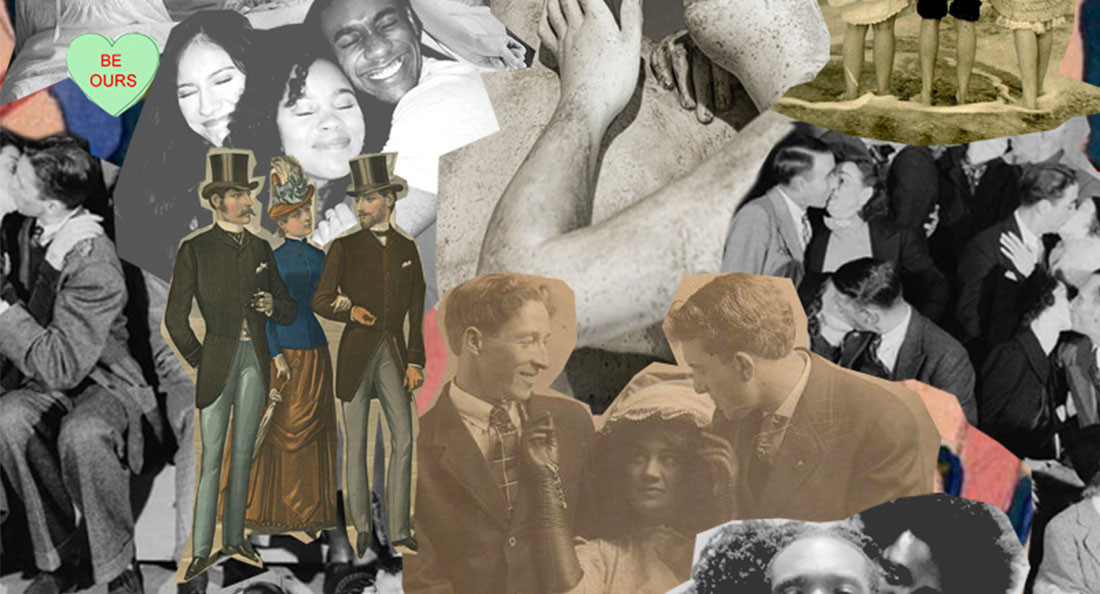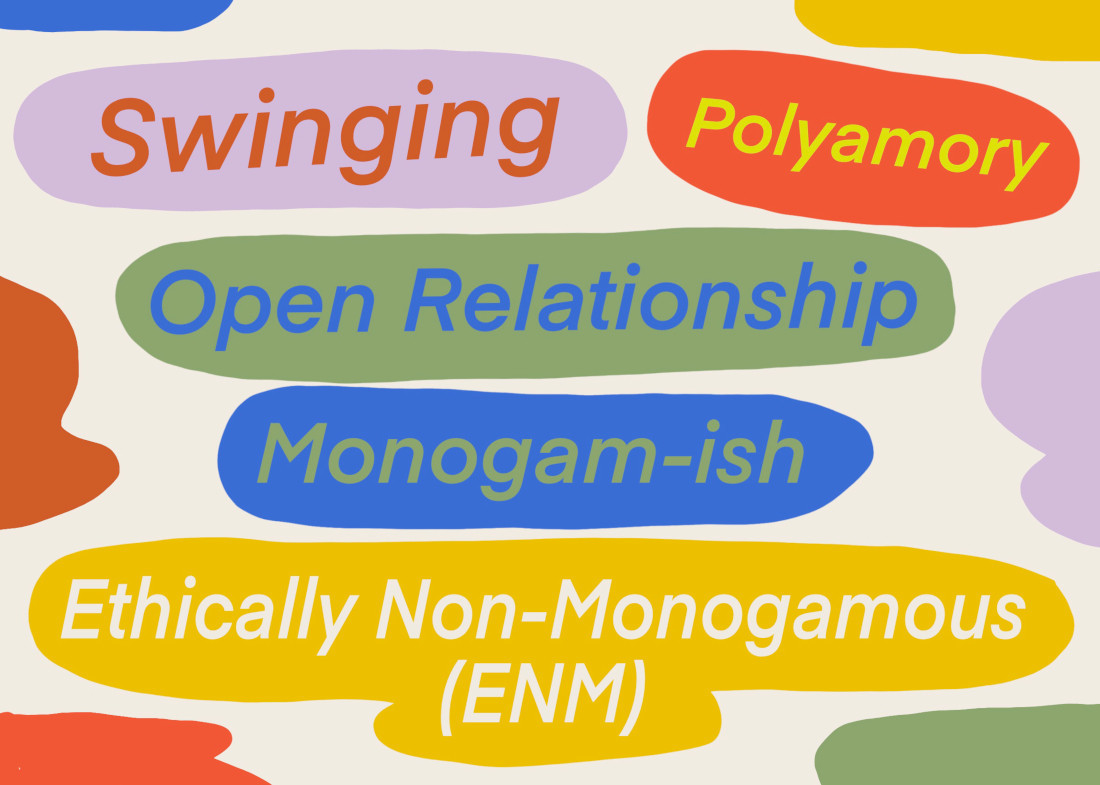Perception shift
Non-monogamy in the pandemic
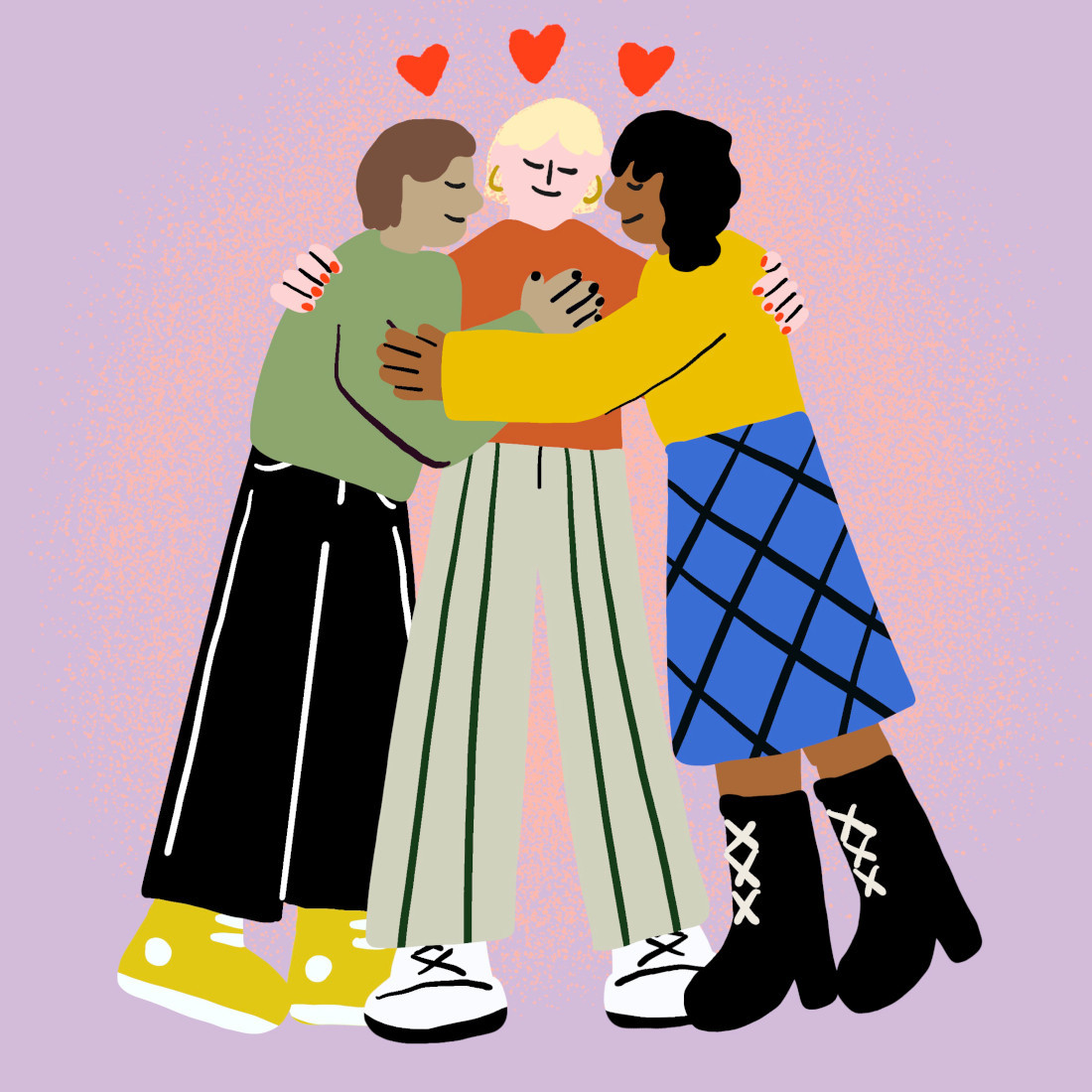
Non-monogamous relationships are fast becoming a prevalent and widely accepted facet of the modern dating scene. They come in an array of forms, all with unique terminology: ethical non-monogamy (ENM), polyamory, monogam-ish, open relationships, swinging, the list goes on. But regardless of the approach, one has to ask the question (cue Carrie Bradshaw laptop screen closeup) are we rethinking our relationship ... to relationships?
Pandemic stress
Certified sex educator and sex therapist Dr. Reece Malone says what is perceived as an en-masse opening up of previously monogamous long-term partnerships is simply that: a perception. “It’s actually very common.
It’s just coming out of the closet a lot more, and, historically, people have very legitimate reasons for not being able to disclose their relationship status,” he says.
“Are there more non-monogamous poly people? Perceptually, yes. Is it true, though? Not necessarily, because you can still identify as such but not be able to express it.”
Naturally, pandemic-induced isolation has also contributed to how relationships are faring. For some people in live-in, monogamous relationships, excess time at home has presented opportunities for more meaningful conversations about their relationship dynamics.
“We know that familiarity can also occasionally equate to boredom,” he says.
“People may start talking about ‘what are different things that you might be curious about that you want to experiment with?’ Those conversations may start to include adding, supplementing, enhancing your relationship, and that may include another person.”
It’s important not to explore such new romantic realms lightly, cautions San Francisco-based polyamory coach Magenta Brooks.
“You want to go into those transitions thoughtfully and not from a place of reactivity and panic,” she says. “It can work, but you really need to go into that process with care, especially because there’s a pandemic.”
While there may appear to be correlation between the COVID-19 pandemic and the exponential opening up of previously monogamous relationships, the truth is that non-monogamy has been around for a long time. Now, it’s simultaneously experiencing both a shift in social perception, as well as facing new and significant challenges from COVID-19.
“One of the worst things was at the beginning of the pandemic. I kept talking to these people who had just decided to open up, and then the pandemic hit,” Brooks says.
She explains that existing in a pandemic added a stressful risk to consider when deciding who to be in contact with. The possibility that “if you spend time with somebody you care about, you could kill them is not good,” Brooks says.
While there are many factors that may give people pause in pursuing non-monogamy, Malone believes that at the core of stigma is what he calls the trifecta of shame, fear and guilt.
“These lessons of shame and guilt may come from your family, origin, history, your culture, but also from other structures like religion and also our legal systems that define what is a legitimate family,” he says.
“People consider poly configurations as alternative as opposed to (considering them part of) the diversity of relationships. Which speaks to another topic: the lack of comprehensive sex education, or the diversity of families, and the principles of what makes a healthy family,” Malone says. “Not which genders are involved or how many people are involved in that family, but the dynamics and the principles of consent, transparency and compassion.”
Despite the stigma, Brooks explains that, for many, the pull toward non-monogamy is an intuitive one, which often creates dissonance when pushing up against societal pressure.
“A lot of people ended up being monogamous out of social expectation. A lot of the people I talk to say things like ‘I really want to have intense, loving relationships. They’re really important to me.’ But they struggled with something within monogamous dynamics, (and) they didn’t know what was wrong. They don’t know where that sense of disquiet was coming from, and then somebody goes, ‘Hey, what about polyamory?’ and then they go, ‘Holy crap, that’s it!’”
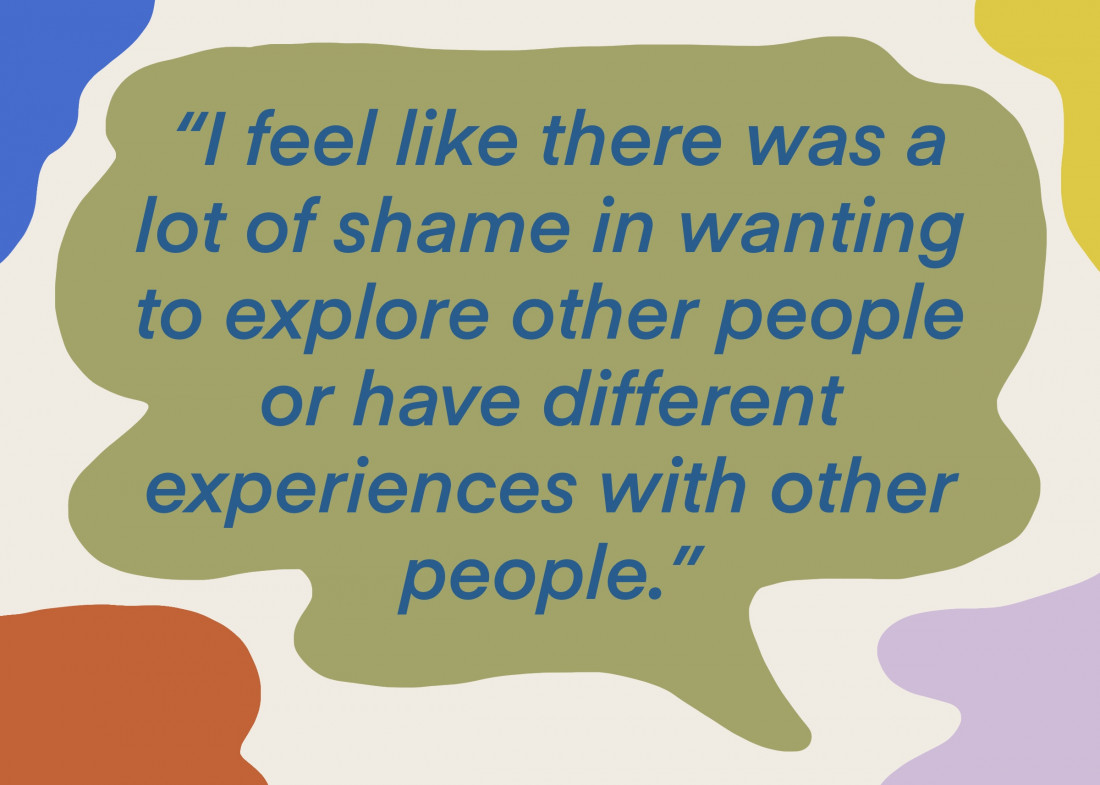
Social stigma
In spite of non-monogamy being a natural choice for some people, Malone believes there is a long way to go in terms of moving past societal constructs.
“We need to look at this from a real systemic, ecological lens, in my opinion, if we’re going to do a cultural and sexological critique of what this phenomenon is all about. Because we know, in history, that poly dynamics have existed throughout time. Ritualistically, they were celebrated, they were honoured, they were revered. (It’s important) to look at how colonial histories impacted those dynamics and the attitudes toward non-monogamy.”
The perception of monogamy as the “default setting” for romance can be damaging in many ways. Veronica Lowry-Pereira is married and polyamorous and feels that misconceptions around polyamory are common.
“I think it’s still super stigmatized. There are people that say things like, ‘oh, it’s so weird. Why can’t you just settle down?’” she says.
There’s “this weird, very old rhetoric. And that’s kind of what I knew before my experience with it, and I feel like there was a lot of shame in wanting to explore other people or have different experiences with other people.”
Because Lowry-Pereira is married to her partner, she says this adds a layer of worry when going out in public with other partners.
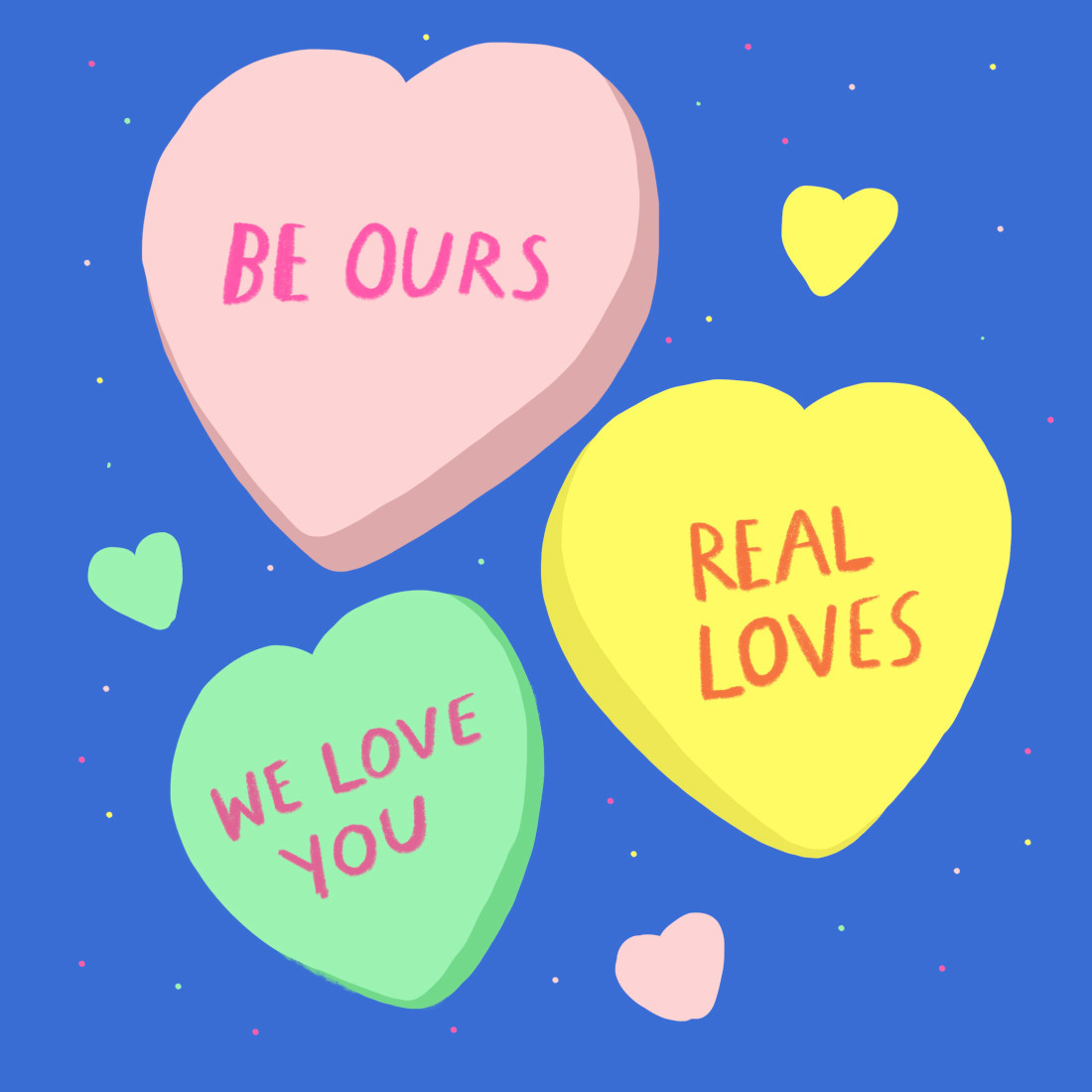
“This is such a small city to do this in, too. The idea of any public displays of affection when people know I’m married ... I never want people to think that that’s something that hasn’t been negotiated, but then I also don’t want to have to talk to people about what I’ve negotiated. It’s not really their business.”
One place where non-monogamy, societal preconceptions and the stress of the pandemic all intersect in a major way is on dating apps.
Jeremy Haywood-Smith is in an ethically non-monogamous couple and well aware of the pitfalls of navigating online dating without the end goal of monogamy. He says some people are put off when they see a profile where someone has self-declared as non-monogamous.
“On dating apps, I think that when people see the abbreviation of “ENM,” that equates to the fish picture now for some people,” he says. “I think it’s the truth. But if people see someone that’s non-monogamous, and their mind is operating within monogamy, they believe that ‘Oh, they don’t want to commit, they don’t want to communicate, they don’t know what they want.’ So I’m sure that’s a quiet stigma that exists. I don’t think people fully understand the full scope of what it can mean.”
“If their first inclination is to be like, ‘Oh, you’re not being honest,’ I can say, no, it’s right there. It’s kind of weeding out people that might not be (interested in non-monogamy).”
Needs
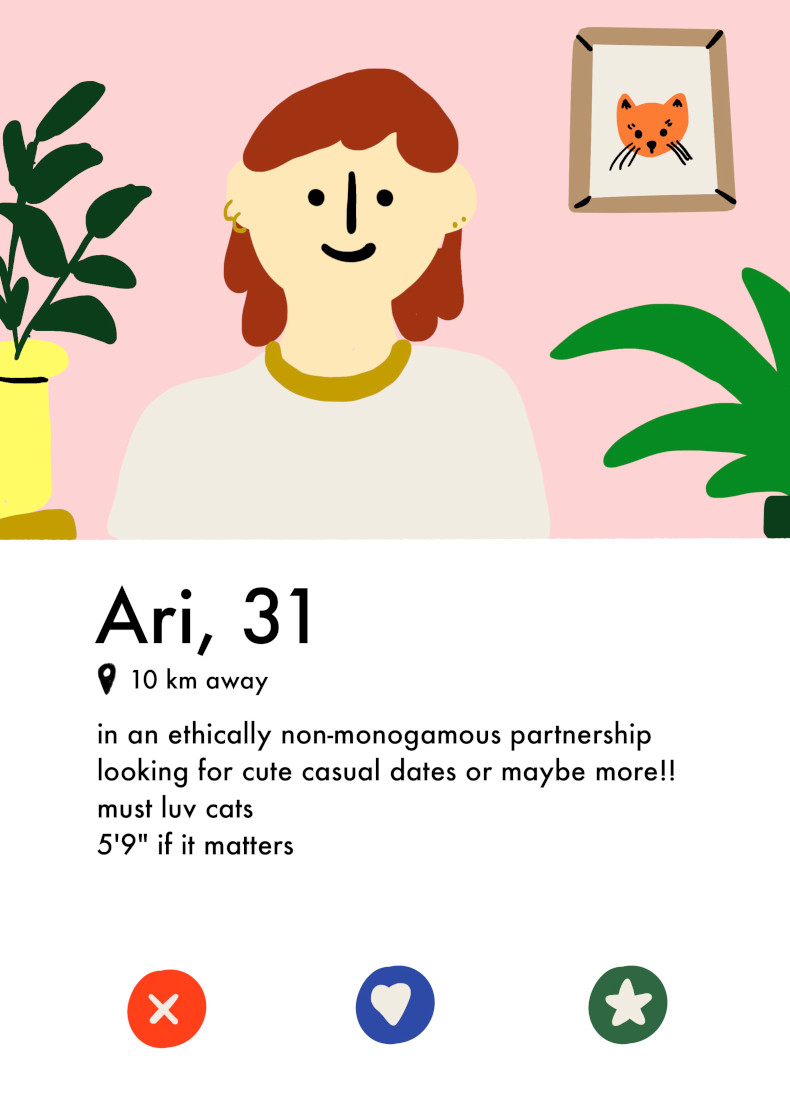
“I often run into situations where people don’t like the hierarchical model, because somebody’s primary partner gets too much say in what they do with their life,” Mia Pohl says. She practices a hierarchical model of polyamory, where she focuses first on her primary partner’s needs.
Pohl has been in a long-distance partnership for six years, in addition to her local primary partnership for a year and a half. Pohl says she applies a needs-based model with her partners. “(My primary partner) Bryce doesn’t get to dictate what I do with my time. He gets to tell me what his needs are and whether or not they’re being met,” she says.
Pohl says that, contrary to the criticism she’s heard, her behaviour isn’t restricted by respecting her partner’s needs.
“He has a need to remain safe, so that dictates what I can do sexually with people. But he doesn’t tell me if I can have sex with someone, that kind of stuff. He doesn’t tell me if I can or cannot hang out with someone. I get to choose when to hang out with someone.”
Pohl found the additional support helpful when she recently travelled to Montreal for bottom surgery.
“I pulled every need out of the whole network. Even people who weren’t my partners, I pulled them into the game. I pulled in Bryce’s partner and said ‘you need to take care of Bryce. I can’t take care of him, so you’ve got to pull through,’” she says.
“It takes a load off of me to make sure his needs are met when he goes out and gets them met by somebody else,” Pohl says. “(It means) being able to say ‘I don’t have the resources for this. I need you. I’m going to help you find someone to meet those needs.’”
Love
For those outside non-monogamy culture, it’s easy to think the move into polyamory springs from dissatisfaction or loneliness, but this is often far from being the case.
“That’s a very easy, palatable way for people who don’t want to put in effort or even give non-monogamy or polyamory a try, right? It’s like, ‘oh, well, someone’s not doing something for you,’” Lowry-Pereira says. “My partner does tons for me. We own property together. We’re literally married. No one else can take that space.”
“Everyone fills different spaces, just like my friendships. Like I go to different people for different problems or different activities. For me, the line between platonic love and romantic love is super, super blurry. I just love to love, and whatever the capacity is, if I can do it, I’m into it.”
Regardless of the challenges currently faced, Brooks has a positive outlook on the growing acceptance of non-monogamy in the cultural consciousness.
“My Midwestern Irish Catholic aunt, when I told her what I did for a living, she said, ‘Oh, that’s interesting.’ I was expecting a whole conversation,” she says.
Brooks sees an emotional shift currently happening, one which may have positive effects not only for individuals engaged in non-monogamy, but for everyone.
“I think polyamory affects how people do monogamy,” she says.
“There are so many healthy ways of seeing each other as fully independent, autonomous people loving each other through choice, and that is a thing monogamous people can do, too. And as these ways of being become more popular and more seen, the lines become fuzzier.”
Published in Volume 76, Number 19 of The Uniter (March 2, 2022)

